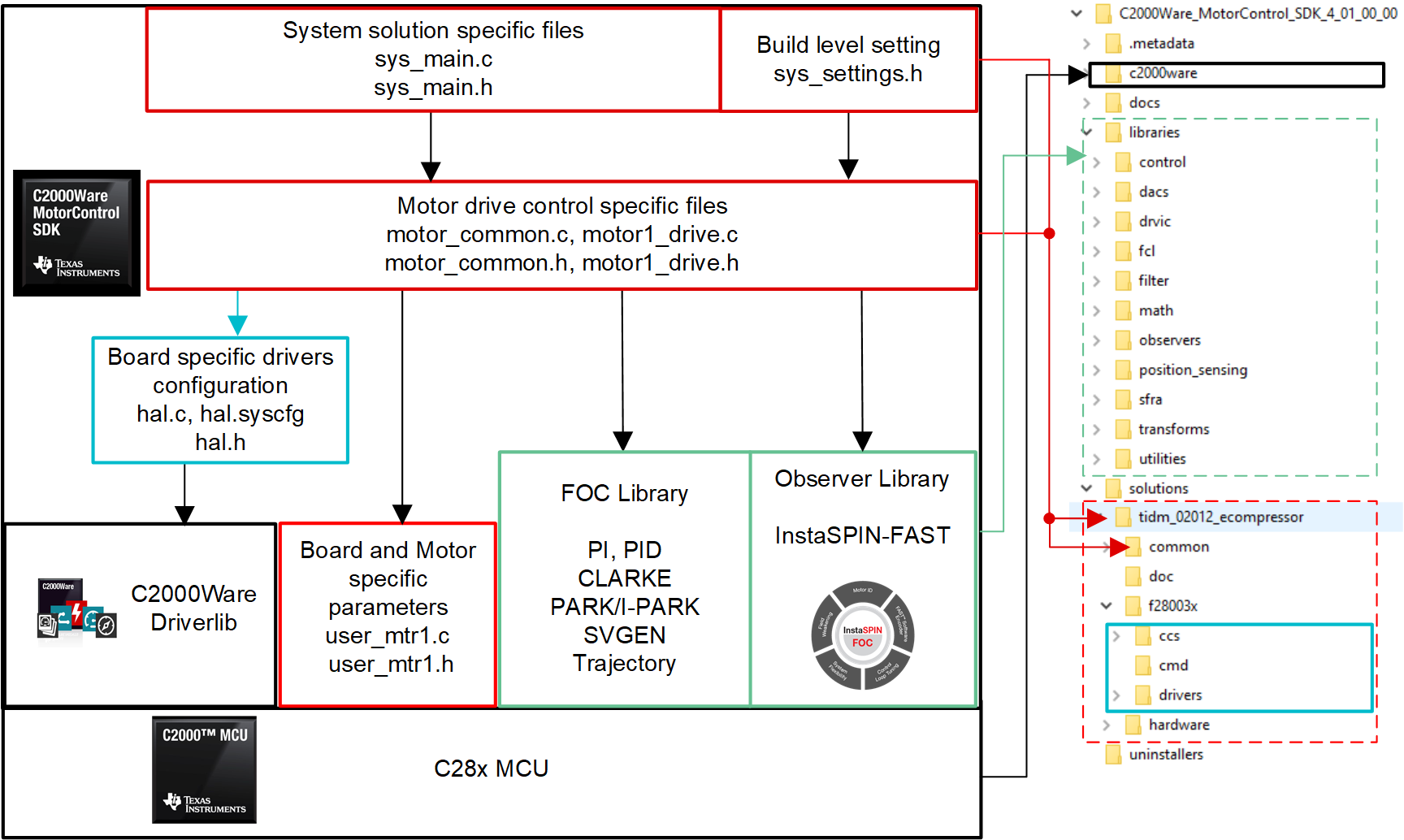TIDUF17 November 2022 TMS320F2800152-Q1 , TMS320F2800153-Q1 , TMS320F2800154-Q1 , TMS320F2800155 , TMS320F2800155-Q1 , TMS320F2800156-Q1 , TMS320F2800157 , TMS320F2800157-Q1
- Description
- Resources
- Features
- Applications
- 5
- 1System Description
-
2System Overview
- 2.1 Block Diagram
- 2.2 Design Considerations
- 2.3 Highlighted Products
- 2.4 System Design Theory
- 3Hardware, Software, Testing Requirements, and Test Results
- 4Design and Documentation Support
3.2.2.2 Software Structure
The general structure of the project is shown in Figure 3-5. The device peripheral configuration is based on C2000Ware Driverlib and is partially generated using SysConfig. You only need to change the hal.c, hal.syscfg, and hal.h files and the parameters in user_mtr1.h if you want to migrate the reference design software to your own board or a different device.
 Figure 3-5 Project Structure
Overview
Figure 3-5 Project Structure
OverviewFigure 3-6 shows the project software flow diagram of the firmware that includes one ISR for real time motor control, a main loop for motor control parameters update in background loop. The ISR will be triggered by ADC End of Conversion (EOC).
To simplify the system bring up and design, the software is organized into four incremental builds described in Table 3-1, which makes learning and getting familiar with the board and software easier. This approach is also helpful for debugging and testing boards. To select a particular build option, you will edit the DMC_BUILDLEVEL option in sys_settings.h file and rebuild the project. This process is described in the detail in the next section.
| DMC_BUILDLEVEL Value | Description |
|---|---|
| DMC_LEVEL_1 | 50% duty, offset calibration and verify phase shift |
| DMC_LEVEL_2 | Open loop control to check sensing signals |
| DMC_LEVEL_3 | Closed current loop to check the hardware settings |
| DMC_LEVEL_4 | Parameters identification and run with InstaSPIN-FOC |